Last updated: 15 July 2023
2022 Update
We are deeply saddened by what is happening across Ukraine at the moment and our hearts go out to everyone whom has been affected by this ongoing tragedy. Obviously, travel to Ukraine is not an option so please consult your local Government website for guidance and official charities on how to best donate.
This post was written in early 2017 following our visit in late 2016, we hope our Ukraine posts continue to provide some historical context about what travel to Ukraine was once like.
This is the third and final post in our three part series covering our visit to the Chernobyl Exclusion Zone in Ukraine. The first post explained the reasons why we decided to visit Chernobyl, what it was like to explore the various sites, such as the Duga radar station and understanding how radiation exposure is measured. The second post focused on our day trip through the abandoned city of Pripyat. And this post delves into the history of Chernobyl Nuclear Power Plant, the deadly explosion, and its aftermath which continues to have an impact on the world today.
Before Roma and I visited the Chernobyl Exclusion Zone, we only had a basic understanding of what had happened on the morning on 26 April 1986. Like most people of our generation we were too young to comprehend the impact and long lasting effects of the Chernobyl nuclear disaster.
We understood that the Chernobyl disaster was the worst nuclear disaster in history and that the reactor and surrounding landscape was still radioactive but aside from that, we couldn’t tell you much else. This is one of the main reasons why we wanted to visit and explore the Chernobyl Exclusion Zone, it was an opportunity to learn about a world-changing event and the ongoing impact to the world at the place where it happened.
The Chernobyl Nuclear Power Plant
The official name was the V.I Lenin Nuclear Power Station and it was constructed between 1972 and 1977. The power plant consisted of four nuclear reactors (two additional reactors were planned) and was the pride of the Soviet Union, a demonstration of its ability to create a world class nuclear facility.
All four reactors were completed at different stages; Reactor 1 in 1977, Reactor 2 in 1978, Reactor 3 in 1981, and Reactor 4 in 1983. This meant that Reactor 4 was only in operation for three years before the explosion in 1986.
The nearby city of Pripyat, located 3 km from the plant, was designed for the plant workers and their families. Pripyat was the most expensive city in the Soviet Union at the time and provided all the amenities one would expect from an important city centre; schools, office buildings, gyms and fitness centre, and newly constructed apartment blocks.
The Chernobyl Disaster
In the early hours of Saturday 26 April 1986, an experiment to test the cooling of the reactor core during an emergency situation took place. During the course of the experiment, a massive power spike occurred which led to the overheating of the reactor core and resulted in the initial explosion.
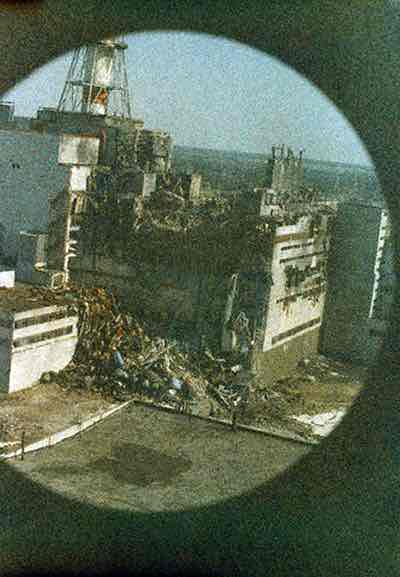
The reactor continued to generate power which resulted in a huge steam buildup and an additional explosion. There are many theories about the cause of the main explosion but the general consensus is that the steam explosion resulted in the destruction of Reactor 4 which ripped the 12 tonne roof off the reactor, resulting in the release of radioactive material into the atmosphere.
It is also interesting to note that the Chernobyl Nuclear Power Plant did not have any concrete external containment as seen in other nuclear power plant designs which are included as a last-ditch effort to contain the spread of radiation in the event of a meltdown.
The First Responders
What happened next was truly tragic. As the first responders arrived at the scene, these heroic firefighters bravely fought the flames in an effort to save the lives of their countrymen. They were all completely unaware that as they did their duty, they were being exposed to lethal doses of radiation.
Two of the firefighters died later that night and a staggering 28 died in the days following.
The Chernobyl Museum, opened on April 25 1992, is housed in an old fire station in Kyiv. The fire station was chosen as the location of the museum because it was home to the largest contingent of firefighters who fought the radioactive blaze. If you’re planning a visit to Kyiv then we recommend a visit to the Chernobyl Museum, it’s comprehensive and provides a lot of detail about Chernobyl and its continued impact on Ukraine and the world. We visited the museum the day before our time in the Exclusion Zone and it was helpful to put a lot of information into context.
Fighting the Radioactive Blaze
Following the explosion at the Chernobyl Nuclear Power Plant, the Soviet Government sent 80 helicopters to fight radioactive blaze. The goal of the helicopters was to drop sand on the burning radioactive blaze. At 200 metres high, 30 min of exposure would be lethal to the pilots.
Some of the helicopter pilots made 33 trips in total. They would make 5 trips before stopping to wash and eat but it was more than the human body could handle and hours later would result in vomiting and radiation sickness.
The Liquidators
Before our visit to the Chernobyl Exclusion Zone, the abandoned city of Pripyat, and the Chernobyl Museum in Kyiv, I had never heard of the Chernobyl Liquidators but their story is honestly remarkable and difficult to comprehend how much they sacrificed for their duty.
There have been over 600,000 people recognised as Chernobyl Liquidators who worked bravely in the middle of the worst nuclear disaster in history however at the time, they were doing what they had to do because it was their duty.
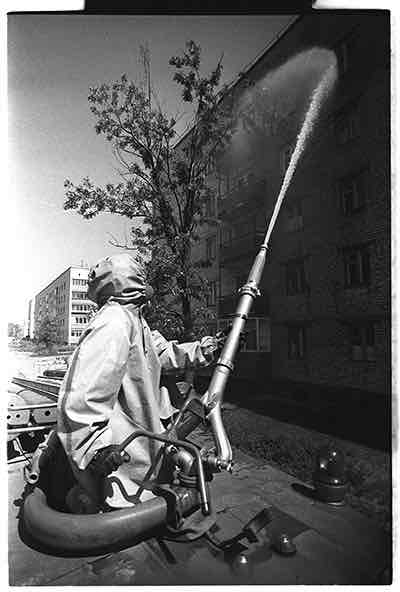
The Liquidators were a combined civil and military team of people who were responsible for the cleanup of the worst parts of the Chernobyl disaster. The military personnel selected for duty were chosen because of their experience in clean-up operations.
The initial decision to clean the rooftops of the nearby buildings was through the use of robots. All seized up within minutes of operation when exposed to the extreme levels of radiation, after which the Soviet authorities decided to use human liquidators (also referred to as Bio-robots) for the operation. The exposure time for the team of liquidators was 40 seconds at any one time which meant that they had to run out on the rooftops to clean debris before running back to the safe areas.
The reward for their heroic actions has been a lifetime of health problems (referred to as Chernobyl Syndrome) and some fighting for recognition of their involvement in the clean up.
According to Vyacheslav Grishin of the Chernobyl Union, the main organisation of liquidators, “25,000 of the Russian liquidators are dead and 70,000 disabled, and about the same in Ukraine, and 10,000 dead in Belarus, and 25,000 disabled”, which makes a total of 60,000 dead (10% of the 600,000 liquidators) and 165,000 disabled – Wikipedia
The Iron Curtain
Winston Churchill, Prime Minister of England, once said in 1946; “From Stettin in the Baltic to Trieste in the Atlantic an iron curtain has descended across the continent”
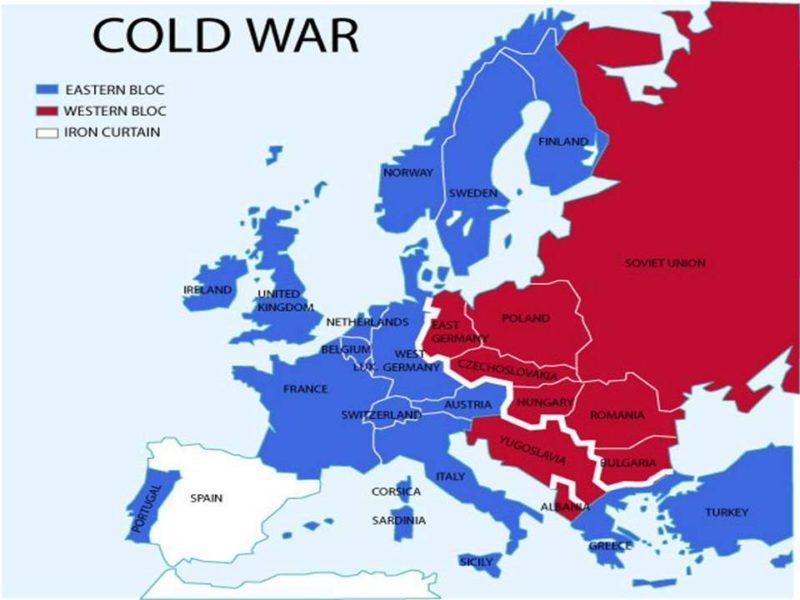
The iron curtain referred to the boundary between the Soviet-occupied countries and the rest of the Europe following the end of World War II and which continued until the end of the Cold War in 1991. For over 45 years, the Soviet-controlled countries essentially vanished from the maps of Europe as they remained closed off from the rest of the world.
There was no greater example of the existence of the iron curtain than in the days following the Chernobyl disaster.
The Radioactive Cloud Hits Europe
Believe it or not but the the first time that the world was alerted that something had gone horribly wrong behind the iron curtain was when a nuclear power plant in Sweden detected an increase of radioactive particles in the atmosphere. Research was conducted and the Swedish workers at the power plant were able to determine that the source was Soviet Ukraine.
It was only after the rest of the world determined that a catastrophic disaster had taken place in Ukraine that the Soviet Authorities confirmed it.
As Roma and I travelled through Eastern Europe, many of the city tours we took all made reference to the Chernobyl disaster and mentioned the radiation cloud which impacted various countries in the days following the explosion.
A visit to the Chernobyl Museum is where we learned how much of Europe, not only Eastern Europe, was impacted by the radiation cloud caused by the Chernobyl explosion. During our visit we learned that the French have denied that the radioactive cloud passed over France however the below video challenges that perspective. Additionally, a particular type of Thyroid cancer found in Greece is similar to those affected in the areas near Chernobyl.
The Town of Pripyat
The town of Pripyat, built for the workers of the power plant and their families, was located a mere 3 km from the destroyed reactor 4. The town was exposed to high levels of radiation in the days following the explosion however none of the population was aware of this.
In the days following the explosion, rumours began circulating in town of the reactor explosion followed by visits to the centre of town by soldiers wearing gas masks and protective clothing taking radiation levels on Geiger counters.
By the 27 April, a full day after the explosion, tensions in town began to rise as no update had been given by the authorities. There were stories of kindergarten classes being given iodine tablets to settle some of panic.
Finally, 48 hours after the Chernobyl Nuclear Power Plant exploded and released unknown quantities of radiation into the atmosphere, Pripyat was given the order to evacuate. The townspeople were given 2 hours to prepare before boarding buses to be temporarily evacuated however they would never return home again. 43,000 people were evacuated in a 3.5 hours, leaving behind only military personnel.
The Sarcophagus
It was three weeks after the explosion when it was determined that in order to neutralise Reactor 4, it would need to be completed isolated and the best way to do that was through the creation of a unique, one of a kind, sarcophagus.
The sarcophagus structure would stand 170m x 66m, a monolith designed to protect the world from the lethal radioactive material burning at the reactor’s core.
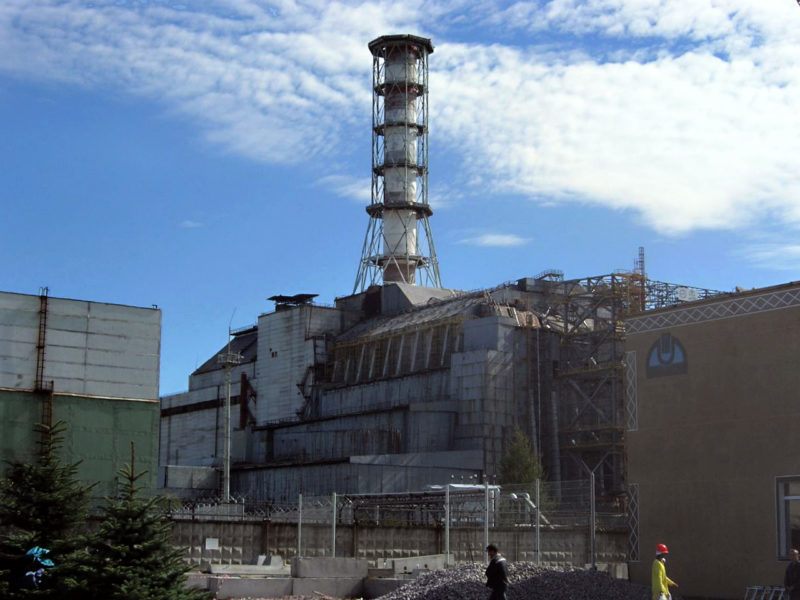
Whilst it was agreed that the sarcophagus would need to be built, the logistics of how to build it was entirely new. It wasn’t humanly possible to build the sarcophagus using the traditional construction methods because exposure to the radiation levels had to be limited to only a few minutes at a time.
The construction of the sarcophagus was built piece by piece, in the almost the same fashion as a giant jigsaw puzzle. Each piece of the structure was fabricated separately, 60m long and weighing 150 tonnes, and then put in place using a variety of machines and men.
The creation of the sarcophagus took 206 days at a cost of 18 billion rubles. The workers etched their names on top of the sarcophagus. The sarcophagus served its purpose and protected the world from the still-burning 200 tonnes of radioactive material but it had a lifespan of 30 years which expired in 2016.
The New Safe Confinement
The Chernobyl New Safe Confinement was a newly created protective structure designed to replace the temporary sarcophagus covering the remains of the destroyed Reactor 4 and its highly radioactive interior.
Our visit to the Chernobyl Exclusion Zone coincided with the same day as the fitting of the New Safe Confinement over the sarcophagus structure. It is said that the New Safe Confinement will last another 100 years and at which point there should be new technology created that can safely dispose of the radioactive remains.
We can only hope.
Decommissioning
The Chernobyl Nuclear Power Plant consisted of four nuclear reactors which were decommissioned in the following order;
- Reactor 4: 1986. Destroyed during the disaster
- Reactor 2: 1991
- Reactor 1: 1996
- Reactor 3: 2000
- Reactor 5: Never completed
- Reactor 6: Never completed
Final Thoughts
A visit to the Chernobyl Exclusion Zone may not be everyone’s To Travel List but because of its place in history, the impact that the disaster had across the entire world, and that the world changed in its aftermath makes it a destination worth visiting.
Should you decide to visit Chernobyl, it will change your view on what you thought you knew about the world’s worst nuclear disaster.
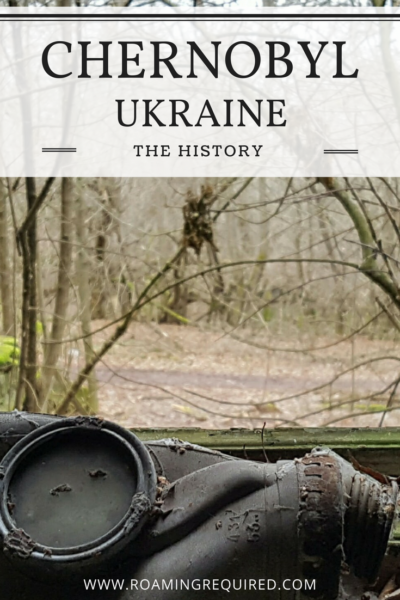
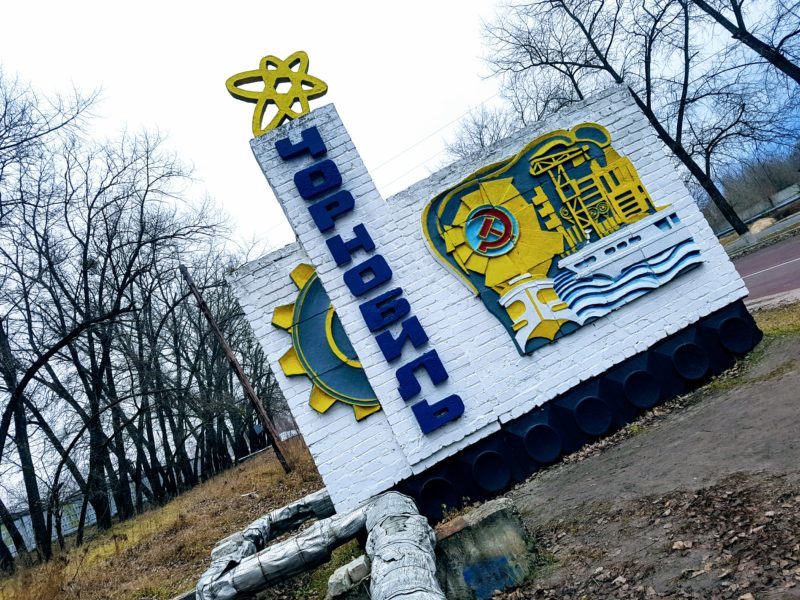
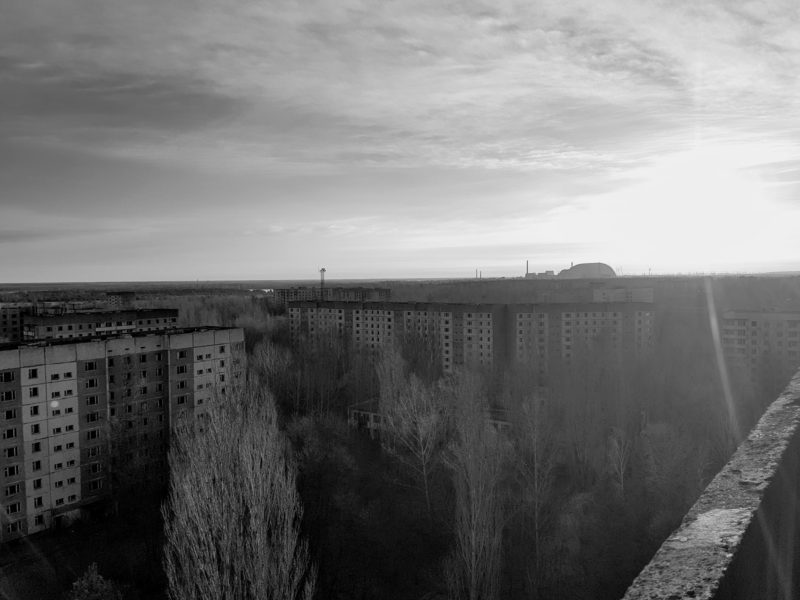
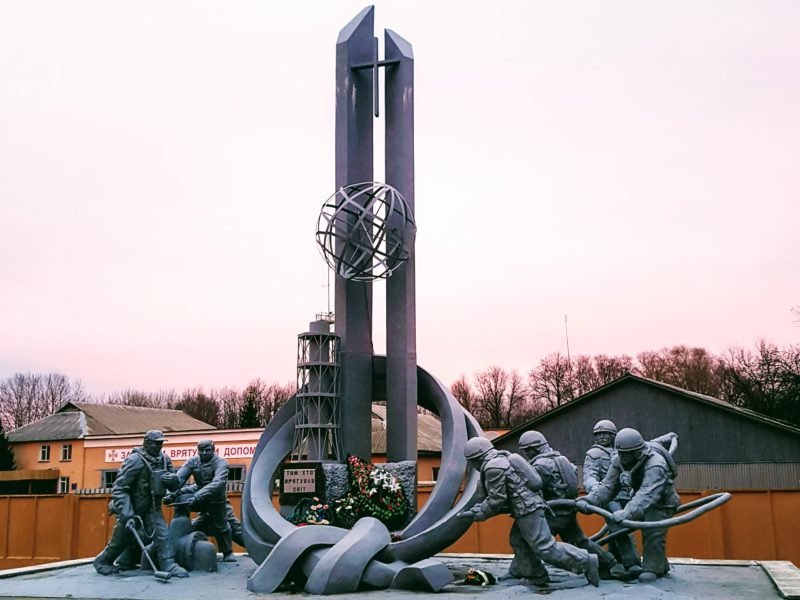
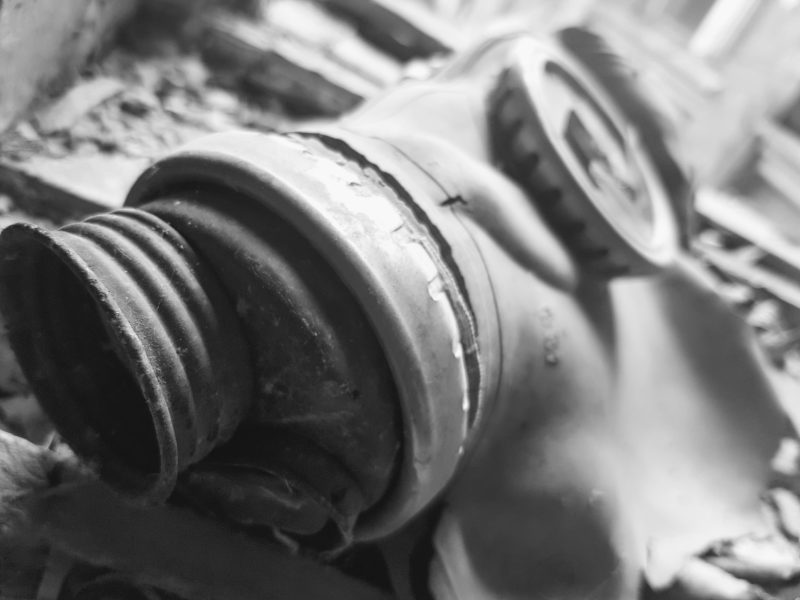
Hi. Amazing photos, just one thing: the labels in your map are the other way around: Western adn Eastern bloc
Glad you loved the photos, I hope it’s inspired you to visit? Thanks for spotting that error, you’re absolutely right Andras, thanks we will certainly correct it.